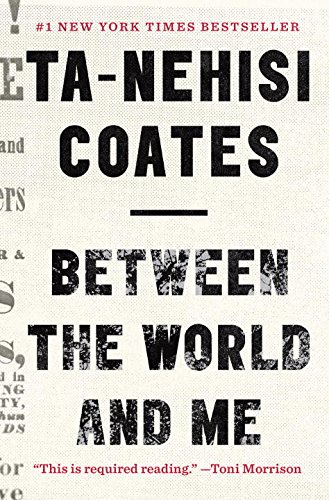Although 2015 was a half year for our co-op (with our new location open from July 1st to December 31st), it was clear which books had buzz among our community. Below we've compiled a "top ten" list, In order of copies sold:
-
Dixie Be Damned: 300 Years of Insurrection in the American South (2015)
By Neal Shirley and Saralee Stafford
Our best seller of 2015 by far, Dixie Be Damned engages seven similarly "hidden" insurrectionary episodes in Southern history to demonstrate the region's long arc of revolt. The authors -- including Asheville-native Shirley -- counter images of the South as pacified and conservative with an adventurous retelling of history. 
Between the World and Me (2015)
By Ta-Nehisi Coates
In a profound work that pivots from the biggest questions about American history and ideals to the most intimate concerns of a father for his son, Coates offers a powerful new framework for understanding our nation’s history and current crisis. If you read one nonfiction workin in 2015, we hope it was this one.-
The Mindfulness Coloring Book: Anti-Stress Art Therapy for Busy People (2015)
By Emma Farrarons
Having established in the early 2010s that we can all read young adult titles without feeling bad about ourselves, society took another leap forward this year with the realization that coloring in books doesn't make adults immature. This coloring book has the added pretention of being good for our mental health! 
Octavia's Brood: Science Fiction Stories from Social Justice Movements (2015)
Edited by adrienne maree brown and Walidah Imarisha
The first anthology of short stories to explore the connections between radical speculative fiction and movements for social change, this awesome book includes contributions from 20 visionary authors.-
Ease Your Mind: Herbs for Mental Health (2014)
By Janet Kent
The only zine on our list, this gem was written by a local herbalist and educator. Arranged by symptom rather than plant, this guide is easy to use and accessible to the non-specialist, covering anxiety, depression and despair, insomnia, hormone-related stress, substance use and recovery, bipolar and more. 
Medicinal Plants Coloring Book (1993)
By Ilil Arbel
Our oldest best-seller, the Medicinal Plants Coloring Book has enjoyed new popularity with the rise of adult coloring books. The informative guide features 44 botanically accurate drawings of plants plus captions describing each plant's coloration and physical characteristics, geographic distribution, and medicinal uses.-
An Indigenous Peoples' History of the United States (2015)
By Roxanne Dunbar-Ortiz
Spanning more than four hundred years, this bottom-up peoples’ history radically reframes US history and explodes the silences that have haunted our national narrative. Dunbar-Ortiz challenges the founding myth of the country and shows how policy against the Indigenous peoples was designed to seize the territories of the original inhabitants, displacing or eliminating them. 
The Princess in Black (2015)
By Dean Hale, Shannon Hale and LeUyen Pham
The first in a humorous and action-packed chapter book series for young readers who like their princesses not only prim and perfect, but also dressed in black and ready for adventure! No one should be surprised that our top kids book was feminist propaganda.-
Live Through This: On Creativity and Self-Destruction (2012)
Edited by Sabrina Chapadjiev
Not a new release, Live Through This continues to resonate as an exploration of the use of art to survive abuse, incest, madness and depression, and the often deep-seated impulse toward self-destruction. Taken together, these artful reflections offer an honest and hopeful journey. 
The New Jim Crow, The: Mass Incarceration in the Age of Colorblindness (2012)
By Michelle Alexander
Although we look forward to the day when this book is read merely for its historic value, legal scholar Michelle Alexander's The New Jim Crow remains essential reading in our "era of colorblindness." With dazzling candor, she argues that "we have not ended racial caste in America; we have merely redesigned it."